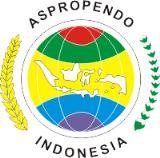Profits in the Perspective of Traditional Market Traders in Gresik, East Java Province, Indonesia
Abstract
Traditional merchants’ profits are not limited to revenue gained over and above costs and expenses, but also include perks such as satisfying life's demands while maintaining a sense of happiness and long-term business relationships. The purpose of this research is to describe the phenomenon of the meaning of profit for traders in the perspective of Gresik culture. This research method is with a qualitative paradigm using an ethnographic approach. Collecting data using participant observation and in-depth interviews conducted by snowball. Test the validity of the data using the member check. Data analysis using the Spradley model. The research results that have been found, the meaning of profit for traders in the perspective of Gresik culture is courtesy, trust, and empathy.
Keywords: culture; profit; trader; traditional marketFull Text:
PDFReferences
Akpan & John, S. (2016). The influence of cultural factors on consumer buying behaviour (a case study of pork). British Journal of Marketing Studies, 4(6), 44–57. www.eajournals.org
Baker, H. K., & Martin, G. S. (2011). Capital structure and corporate financing decisions: Theory, evidence, and practice (Vol. 15). John Wiley & Sons.
Balaguer, J. I. G., & Castellano, C. J. P. (2012). The different conception of economic profit in cooperatives. Journal of Co-operative Accounting and Reporting, 6(1), 29–52. https://smu.ca/webfiles/2012-1-2-p2.pdf
Banerjee, A., Duflo, E., Glennerster, R., & Kinnan, C. (2015). Plenarvorlesung "psychosomatische medizin und psy chotherapie" themen dozent. American Economic Journal: Applied Economics, 7(1), 22–53. https://economics.mit.edu/files/5993
Brigham, E. F., & Daves, P. R. (2014). Intermediate financial management. Cengage Learning.
Čalopa, M. K., Horvat, J., & Lalic, M. (2014). Analysis of financing sources for start-up. Journal of Contemporary Management Issues, 19(2), 19–44. https://hrcak.srce.hr/file/196722
Creswell, J. W., & Poth, C. N. (2016). Qualitative inquiry and research design: Choosing among five approaches. Sage publications.
Fatchan, A. (2015). Metode penelitian kualitatif (pendekatan etnografi dan etnometodologi untuk penelitian ilmu-ilmu sosial). Ombak.
Febrianty, D. (2013). Model of role strengthening of traditional market based on social capital in Indonesia: Study case Beringharjo Market, Jogjakarta. Journal of Economics and Sustainable Development, 4(5), 115–125. https://citeseerx.ist.psu.edu/viewdoc/download?doi=10.1.1.839.5768&rep=rep1&type=pdf
Ferrell, O. C., & Fraedrich, J. (2021). Business ethics: Ethical decision making and cases. Cengage learning.
Folorunso, O., Abodunde, S., & Kareem, T. (2015). Small and medium scale enterprises and economic growth and development in Nigeria: An empirical investigation. International Journal in Management and Social Science, 3(04), 459–469. https://doi.org/10.5539/ijbm.v10n3p203
Forte, D., Barros, L. A., & Nakamura, W. T. (2013). Determinants of the capital structure of small and medium sized Brazilian enterprises. BAR - Brazilian Administration Review, 10(3), 347–369. https://doi.org/10.1590/S1807-76922013000300007
Gathogo, G., & Ragui M. M. (2014). Capital structure of Kenyan firms: What determines it? Research Journal of Finance and Accounting, 5(5), 118–125. https://iiste.org/Journals/index.php/RJFA/article/view/11418%0Ahttp://www.ku.ac.ke/schools/business/images/stories/research/dr-raguri/capital-structure-kenyan-firms.pdf
Haque, A., Rahman, S., & Haque, M. (2011). Religiosity ethnocentrism and corporate image towards the perception of young muslim consumers: Structural equation modeling approach. European Journal of Social Sciences, 23(1), 98–108. http://irep.iium.edu.my/3966/1/Religiosity_(EJSS)_2011.pdf
Harnanto. (2019). Dasar-dasar akuntansi (2nd ed.). Yogyakarta: Andi.
Heung-Ryel, K. (2015). Culture and tourism-oriented local traditional market strategies in Korea. Proceedings of the First European Academic Research Conference on Global Business, Economics, Finance and Social Sciences (EAR15Italy Conference), 1–2.
Kieso, D. E., Weygandt, J. J., & Warfield, T. D. (2013). Intermediate accounting, 15th edition. John Wiley & Sons Inc.
Kumar, N. S. (2014). A study on capital structure pattern of small and medium enterprises (SMEs). IOSR Journal of Economics and Finance (IOSR-JEF), 5(6), 19–23. http://www.iosrjournals.org/iosr-jef/papers/Vol5-Issue6/Version-3/C05631923.pdf
Leach, J. C., & Melicher, R. W. (2015). Entrepreneurial finance, Fifth Edition. Published by Cengage Learning.
Longenecker, J. G., Petty, J. W., Palich, L. E., & Hoy, F. (2013). Small business management. Cengage Learning.
Marwa, N. (2014). Micro, small and medium enterprises’ external financing challenges: The role of formal financial institutions and development finance intervention in Tanzania. International Journal of Trade, Economics and Finance, 5(3), 230–234. https://doi.org/10.7763/ijtef.2014.v5.376
Mas, N., Thoyib, A., Surachman, & Solimun. (2014). Trader sturdiness at traditional market in facing modern market progress. International Journal of Business and Management Invention, 3(5), 49–58. https://www.ijbmi.org/papers/Vol(3)5/Version-3/F0353049058.pdf
Mateev, M., Poutziouris, P., & Ivanov, K. (2013). On the determinants of SME capital structure in Central and Eastern Europe: A dynamic panel analysis. Research in International Business and Finance, 27(1), 28–51.
Mazzarol, T., Reboud, S., & Clark, D. (2015). The financial management practices of small to medium enterprises. 28th Annual SEAANZ Conference Proceedings 2015, 1–22. https://cemi.com.au/sites/all/publications/SEAANZ-2015-Mazzarol-Reboud-Clark.pdf
Miglo, A. (2016). Capital structure in the modern world. Springer.
Mursy, A. L., & Rosidi. (2013). Sentuhan rasa di balik makna laba. Jurnal Akuntansi Multiparadigma JAMAL, 4(2), 165–176. http://jamal.ub.ac.id/index.php/jamal/article/download/245/225
Myers, M. D. (2019). Qualitative research in business and management. Sage publications.
Needles, B. E., Powers, M., & Crosson, S. V. (2013). Principles of accounting. Cengage Learning.
Pakurár, M., Haddad, H., Nagy, J., Popp, J., & Oláh, J. (2019). The service quality dimensions that affect customer satisfaction in the Jordanian banking sector. Sustainability, 11(4), 1–24. https://doi.org/10.3390/su11041113
Pletnev, D., & Barkhatov, V. (2016). Business success of small and medium sized enterprises in Russia and social responsibility of managers. Procedia Social and Behavioral Sciences, 221, 185–193.
Sarker, S. R. (2017). Small and medium enterprise financing. The Cost and Management, 45(2).
Šarlija, N., & Harc, M. (2011). Small and medium enterprises in Croatia. 14(1958), 251–266. https://www.fm-kp.si/zalozba/ISSN/1581-6311/14_251-266.pdf
Schein, E. H. (2017). Organizational culture and leadership. Fifth Edition. Published by John Wiley & Sons, Inc.
Susilowati, K. D. S. (2014). The impacts of modern market to traditional traders (a case in Malang City - Indonesia). International Journal of Technical Research and Applications, 2(8), 38–44. https://www.ijtra.com/special-issue-download.php?paper=the-impacts-of-modern-market-to-traditional-traders-a-case-in-malang-city-indonesia
Ubaidillah, A., Mulyani, S., & Effendi, D. E. (2015). Makna keuntungan bagi pedagang kaki lima (studi pada pedagang kaki lima di Bangsri Jepara). Jurnal Akuntansi dan Investasi, 14(1), 65–77. https://journal.umy.ac.id/index.php/ai/article/download/496/628
Weygandt, J. J., Kimmel, P. D., & Kieso, D. E. (2011). Financial accounting. IFRS Edition. John Wiley & Sons, Inc.
Wiyarni, W., Triyuwono, I., Ludigdo, U., & Djamhuri, A. (2013). Javanese traditional market cultural value in accounting world. IOSR Journal of Business and Management, 10(5), 9–16. https://doi.org/10.9790/487x-1050916
Zakariya, K., Kamarudin, Z., & Harun, N. Z. (2016). Sustaining the cultural vitality of urban public markets: A case study of Pasar Payang, Malaysia. Archnet-IJAR, 10(1), 228–239. https://doi.org/10.26687/archnet-ijar.v10i1.914













